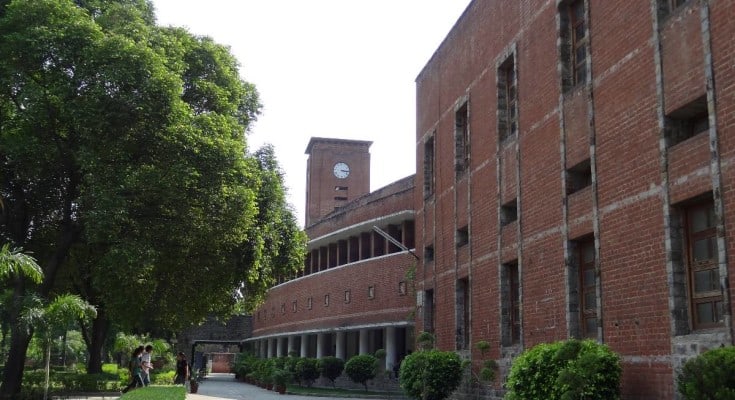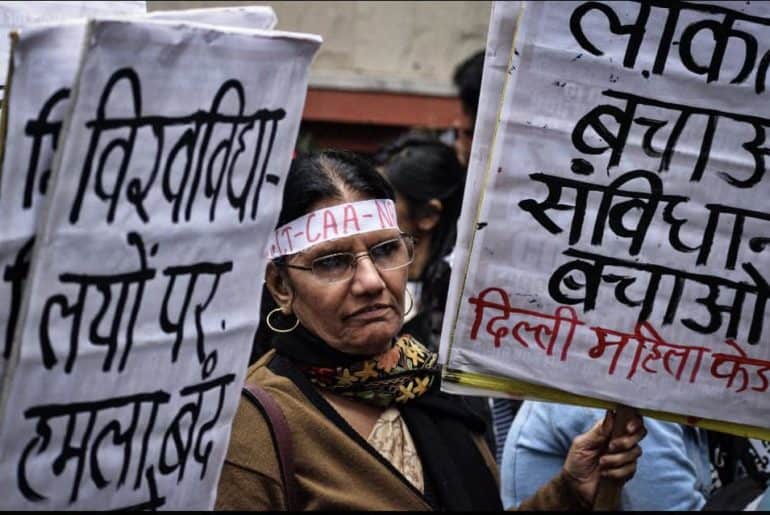As Ambedkar turns 129 years old, the symbols of his legacy begin to matter more than ever.
Dr B.R. Ambedkar continues to be a guiding light for the people of India. Before the 70s, a large part of his work on Dalits and their emancipation was not known to the general public, post which it was published by Dalits activists seeking enlightenment through his writings. The thoughts and methods manifested by his work, to counter the entrenched system of caste in India, is called Ambedkarism.
Modern-day protestors, primarily the ones resisting the Constitutional Amendment Act, 2019, chant his name and claim his legacy as an advocate for equality and freedom. But is this devotion pure and absolute?
The Claim for a Sacred Legacy
Ambedkar’s revered status in civil society has always been known to every citizen of India. For a long time, his legacy was closely held by members of the Dalit community and several left-wing parties.
Hindu-nationalist leaders have used his image to claim their solemn adherence to the constitution, claiming that “No Government has, perhaps, given respect to Babasaheb the way our Government has” (Quoted by The Time Magazine). This reverence, they claim, extends to the annihilation of caste as well. Experts believe that BJP’s newfound love for the Dalit leader comes as a part of their attempt to woo non-upper caste Hindus. BJP also claims that Ambedkar’s thoughts are closer to their ideology than the left, citing his opinion on Article 370 and the Uniform Civil Code. However, the former is not true, as is clearly mentioned in the manifesto of his party, The Scheduled Castes Federation. Dalit activists, on the other hand, believe this to be an appropriation of Babasaheb’s legacy. As CAA protestors march forward chanting ‘Jai Bhim!’, the author of India’s constitution finds himself on both sides of the wall.
Hero-Worship
His legacy has been appropriated to an enormous extent. 2 years ago, a statue of him was painted saffron and repainted to blue in a village of Uttar Pradesh. Throughout his life, Ambedkar criticised socialists and Gandhians for revering Gandhi as a ‘Mahatma’, a concept he abhorred. It is, therefore, safe to say that he would’ve hated the current absorption with his images and statues. During Dalit protests against the dilution of SC/ST (atrocities) Act, and against the Constitutional Amendment Act of 2019, his pictures have been widely used as a part of the symbols of truth and constitutionality. However, whether Ambedkar himself would have approved of this shall continue to be a matter of dispute.
Dalit Movements
Prasant Jha, in an article for Hindustan Times, said “Dalit society is ahead of Dalit Politics”. Commenting on Mayawati and the current flagbearers of Dalit politics, the author expressed grief over a lack of debates and conversations about the oppression which continues to persist. Atrocities against Dalits have increased over the years. Activist Ram Kumar told Hindustan Times that assertion is the reason for this rise. “In my father’s generation, if a Pandit came along, he would sit on the chair, and the rest would sit on the floor. And now, if a pandit comes, he can sit with us, or can stand and we keep sitting”, he added.
But countering these atrocities, one of which is Rohith Vemula’s suicide, there are Dalit students marching against the VC of the Hyderabad University, carrying Ambedkar’s photo in their fierce hands. There are thousands of students who are able to complete their PhDs under government allowance. The act of studying is an act of protest for them. Within the hostel rooms of such students, Ambedkar’s photo hangs on one of the walls.
Constitutionality of Protests
Ambedkar deemed protests unconstitutional during his final speech in the constituent assembly, in the year 1949. “We must…hold fast to constitutional methods of achieving our social and economic objectives. It means we must abandon the bloody methods of revolution. It means that we must abandon the method of civil disobedience, non-cooperation and satyagraha. When there was no way left for constitutional methods for achieving economic and social objectives, there was a great deal of justification for unconstitutional methods. But where constitutional methods are open, there can be no justification for these unconstitutional methods. These methods are nothing but the Grammar of Anarchy and the sooner they are abandoned, the better for us.” But if there are no constitutional methods left to achieve justice, protests can be deemed as constitutional. I, for one, do not think that when the Supreme court fails to deliver justice, as has happened a few times, people should stop and do nothing. Unconstitutional methods should be condemned. This was one of the reasons why Ambedkar, at times, criticized communists as well, as their use of violent means did not please him. As quoted in a paper by Ramadas V, “His disagreement with the communists was not on their aim of creating a socialist society but about the use of violent means to do so”.
Towards Annihilation
As the ship of time sails, India’s median voter becomes more nationalist than ever. Ambedkar believed that Hinduism equates to Brahmanism, which is inflexible and rigid. In such times, the dream of annihilation seems unattainable. But for disenfranchised Dalits, for exploited Muslims, for depressed minorities, the image of Ambedkar is a symbol of activism. A symbol of their living hope against tyranny and subjugation. The question of hero-worship, a warning posed by Ambedkar back in 1949, continues to linger. But for a Dalit robbed off his dignity and right to protest, hero-worship does more good than harm.
As saffron hands stifle you, chanting ‘Jai Bhim!’ might be the most empowering thing to do.
Feature Image Credits: The Scroll
Kuber Bathla



